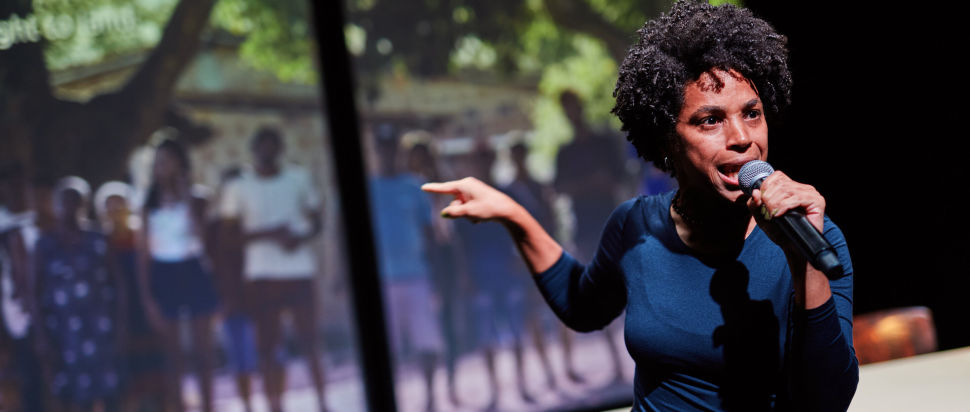EIF: After the Silence @ The Studio
This multi-media narrative about the assassination of João Pedro Teixeira treads a fine line
This ambitious performance loosely combines ideas and characters from the novel Torto Arado, which tells the story of two sisters, Bibiana and Belonísia. However, in After the Silence, the focus shifts to the parallels between the fictional murder of Bibiana’s boyfriend, Severo dos Santos, and the real-life assassination of peasant leader João Pedro Teixeira in 1964, orchestrated by local landowners.
Featuring incredibly stirring documentary footage from Eduardo Coutinho’s Cabra Marcado para Morrer, which denounces Teixeira’s murder, and mixing it with what appears to be footage involving residents from Remanso and Iúna in Chapada Diamantina, Brazil, the performance initially seems to present a factual narrative.
The cast – Caju Bezerra, Juliana França, Gal Pereira and musician Aduni Guedes – directly addresses the audience, claiming to be the girlfriend, sister and friends of Severo dos Santos. His sister, portrayed by Bezerra, vows to avenge his assassination by sharing his story with us. There is no indication that this is not true.
Thomas Walgrave’s set design is minimalist with an avant-garde feel. Two desks on stage are equipped with microphones à la Spalding Gray, with one of the desks holding simple musical instruments like a whistle, a clay pot, percussion brushes and conga drums, which Guedes plays, conjuring shamanic atmospheres of calm, threat and ritual. A screen divided into three sections creates beautiful video triptychs. The actors claim to be part of the community featured in the 'documentary', even commenting on their kinship with the old ladies.
The performance addresses the same struggles as Coutinho’s work: that Afro-descendant peoples continue to live under conditions not dissimilar to the slavery era, lacking access to education, stable homes or ownership of the land they’ve cultivated for generations.
It was only after seeing Severo’s death on camera that I realised it was all fiction. The performance continues to toy with the audience’s perception of reality, ultimately leading to the reveal that what is initially presented as a documentary was actually a work of docufiction.
While writer-director Christiane Jatahy’s intention to blur reality and fiction was successful, it ultimately left me questioning the point of the technique. In a world filled with fake news, often concocted by oppressors, After the Silence treads a fine line.
After the Silence, The Studio, run ended
